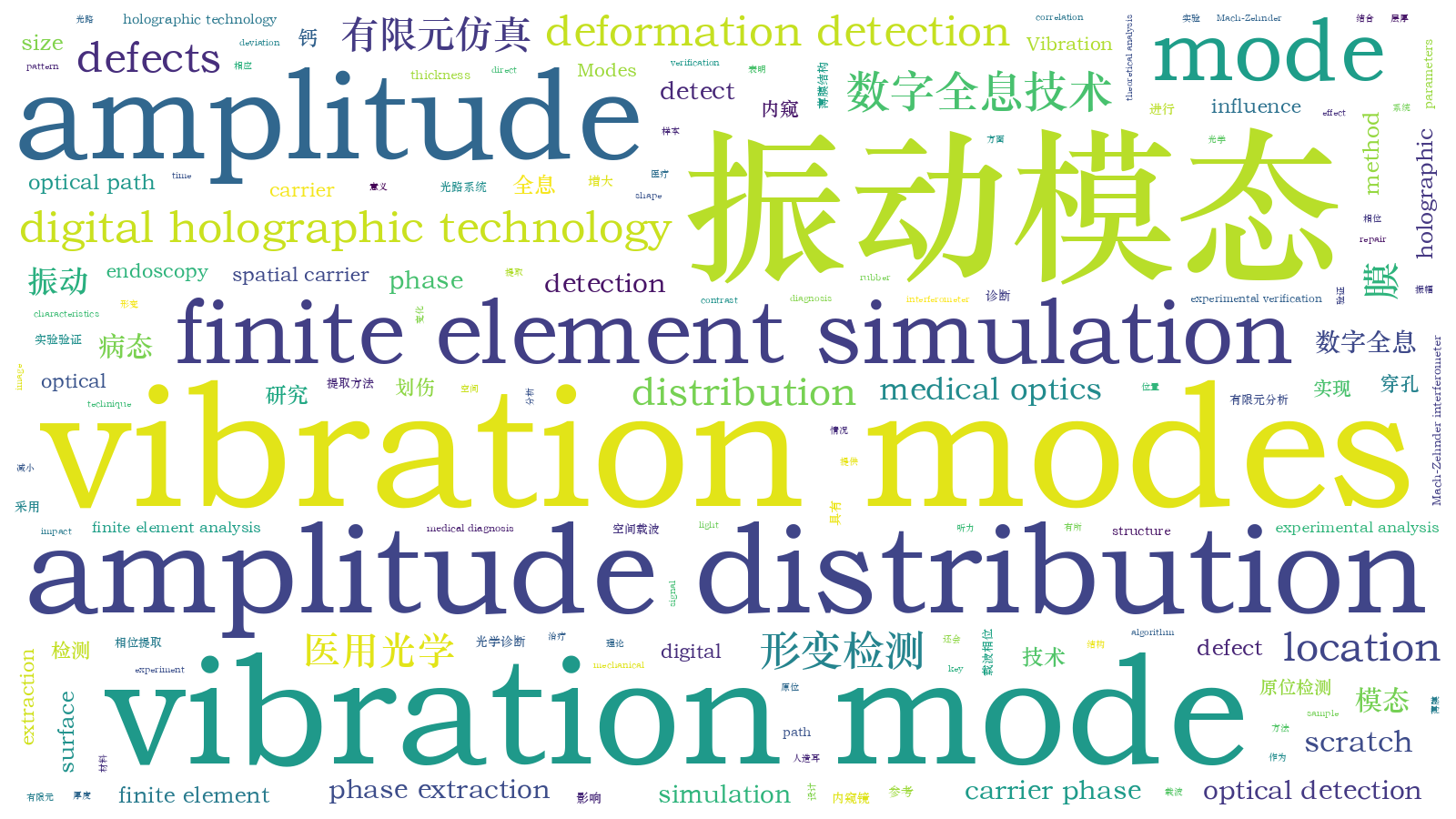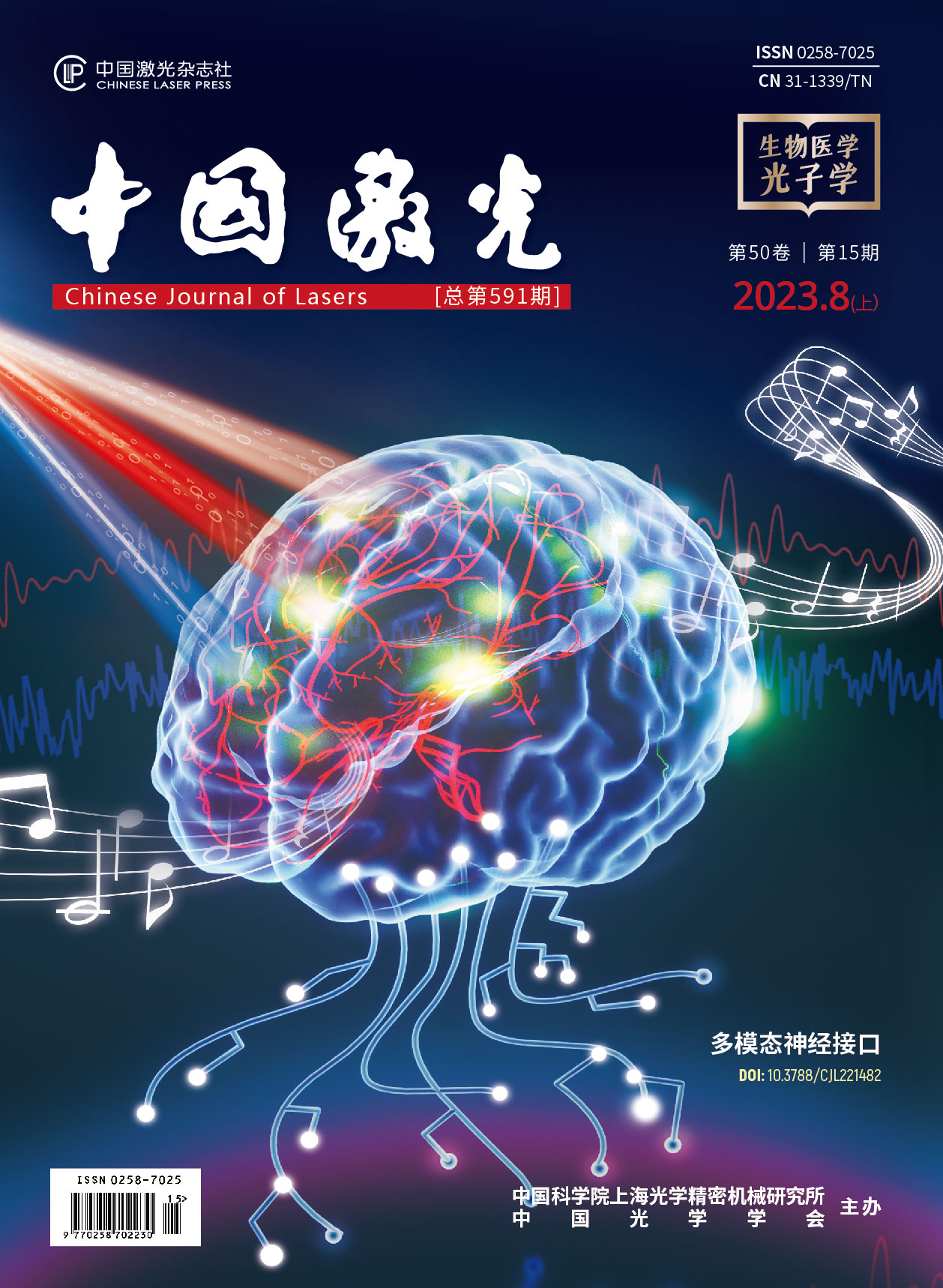数字全息内窥技术实现耳膜病态下的振动模态研究【增强内容出版】
Ear is an important hearing organ of the human body. While hearing, the eardrum vibrates to transmit the incoming sound to the middle ear, and the characteristics of these vibrations have a direct impact on hearing. Studying the vibration parameters of the eardrum is extremely significant and valuable for the medical diagnosis of hearing disorders. In previous studies, researchers have used digital holographic technology to detect the amplitude and phase of the vibrating eardrum surface. However, because of the intricate location of the eardrum in the ear canal, the optical path structure is limited. Currently, the detection of key eardrum parameters relies primarily on dissected samples. The correlation between the eardrum defects and vibration modes obtained through experimental and simulation analyses remains unclear. Therefore, digital holographic endoscopy is proposed to study the vibration mode of a defective eardrum, and an algorithm for spatial carrier phase extraction is implemented to detect the vibration mode. Compared with the fringe pattern of the amplitude distribution obtained using the traditional image subtraction mode, the light and dark contrast of the fringes obtained by phase subtraction is significantly improved. In this study, the effects of different defects in an eardrum on the first-order vibration mode were verified, thereby providing a method and theoretical basis for the in?situ detection of defective eardrums.
In this study, the relationship between eardrum defects and vibration modes was analyzed using finite element simulation and experimental analysis. Owing to the difficulty in obtaining an eardrum, a silicone rubber film, which is commonly used in the medical eardrum repair, was used as a substitute. In the finite element analysis, we studied the changes in the first-order vibration mode of the artificial eardrum based on perforation, scratch and calcification. In the vibration mode detection experiment, we built an optical path of the Mach-Zehnder interferometer for digital holographic endoscopy and used a sinusoidal signal excited by a speaker to stimulate the resonance of the sample surface. Spatial carrier phase extraction based on the time-averaged method was used to detect the amplitude distribution of the film surface in the vibration mode. Based on the changes observed in the amplitude distribution in the first-order vibration mode for the artificial eardrums with different defects, the location and severity of the defect and their influence on the vibration were analyzed.
First, the theoretical analysis proves that using the spatial carrier phase extraction method to detect the amplitude distribution in eardrum samples in the vibration mode is reasonable. In the finite element simulation and experimental analysis, the vibration modes of the artificial eardrums with defects were analyzed, and the results showed that different defects affect the amplitude distribution in the first-order vibration mode for the eardrums differently. For the perforated eardrum samples, the amplitude distribution was analyzed by varying the size and location of the perforation. The results show that the amplitude near the perforation increases significantly with the increase in perforation size (Figs. 3 and 4), and an increase in the number of fringes is observed in the experimental results (Fig. 11). By changing the location of the perforation, the maximum amplitude shifts off-center with the perforation, and the larger the perforation, the more evident the deviation. The amplitude distribution for the scratched eardrum samples was analyzed by varying the size and location of the scratch. The results show that at the same location, the larger the scratch length, the larger the surface amplitude of the film (Fig. 5), and the amplitude changes more significantly near the scratch location (Fig. 6). The experimental results show an increase in the number of fringes, and the shape of the fringe near the central scratch is flat (Fig. 12). When the scratch is off-center, the effect on the amplitude near the scratch is significantly greater than that at the center. The amplitude distribution for the calcified eardrum samples was analyzed by varying the thickness of the calcified layer (Fig. 7). The amplitude of the film decreases with an increase in the thickness of the calcified layer but is more evident at the location of the calcified layer (Figs. 8 and 13).
In this study, a finite element simulation method was used to evaluate the influence of different defects of an eardrum on the first-order vibration mode. Digital holographic endoscopy was used to detect the vibration mode of the eardrum, and experimental verification of the simulation results was performed. The simulations and experimental results show that variations in the defects of the eardrum affect the first-order vibration mode, and the effects differ based on the size and location of the defect. From a mechanical perspective, an eardrum defect leads to a change in the local stiffness of the structure. Perforation and scratches reduce the stiffness, and calcification increases the stiffness; this leads to increased vibration of the eardrum near the perforated and scratched regions and a weakened vibration near the calcification layer. This study shows the influence of defects on the vibration of the eardrums by analyzing the distribution of the amplitude at the eardrum and the location and severity of the defect. This study provides an optical detection technique for evaluating eardrum defects, which can help in preventing and detecting hearing disorders.
丁剑雯, 周文静, 于瀛洁. 数字全息内窥技术实现耳膜病态下的振动模态研究[J]. 中国激光, 2023, 50(15): 1507204. Jianwen Ding, Wenjing Zhou, Yingjie Yu. Vibration Modes Study of Defective Eardrum Realized Using Digital Holographic Endoscopy[J]. Chinese Journal of Lasers, 2023, 50(15): 1507204.







